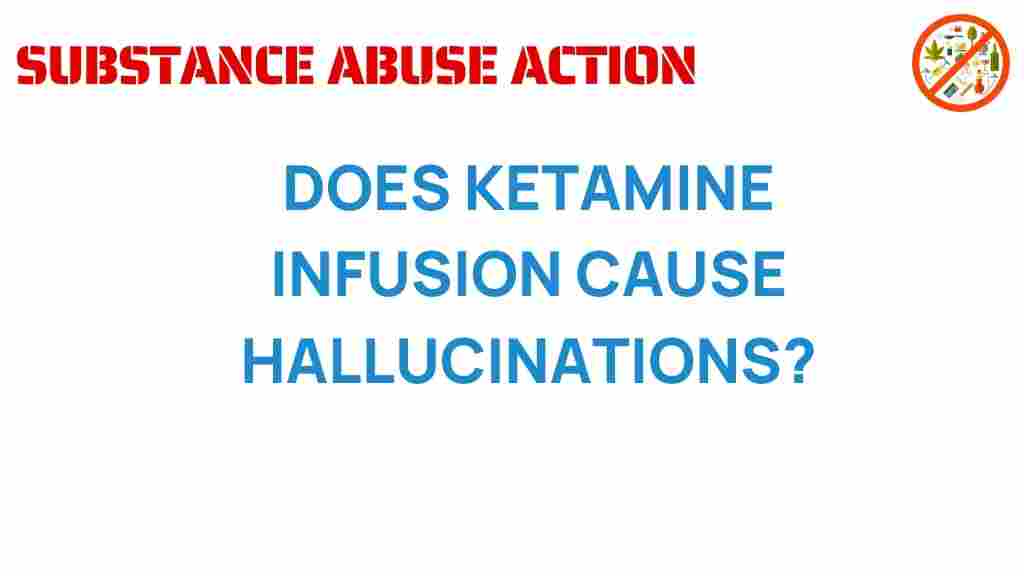Unraveling the Mystery: Does Ketamine Infusion Induce Hallucinations?
Ketamine has emerged as a groundbreaking treatment option for various mental health conditions, including depression and anxiety. Its use as an infusion therapy has opened doors to rapid relief for patients who are often resistant to traditional treatments. However, one question that frequently arises is whether ketamine infusion induces hallucinations. In this article, we will delve into the intricacies of ketamine, its infusion process, potential side effects, and its overall impact on mental health therapy.
Understanding Ketamine and Its Uses
Ketamine is an anesthetic that has been used in medical settings for decades. In recent years, it has garnered attention for its potential as a powerful treatment for mental health disorders, particularly treatment-resistant depression and severe anxiety. Unlike conventional antidepressants that may take weeks to show effects, ketamine can provide relief within hours or days.
The Infusion Process
The process of ketamine infusion involves administering the drug intravenously, allowing for precise control over the dosage and rapid onset of effects. Here’s a step-by-step breakdown of how the infusion typically works:
- Initial Consultation: Patients meet with a healthcare professional to discuss their medical history, current symptoms, and treatment goals.
- Preparation: Prior to the infusion, patients may undergo a physical exam and possibly lab tests to ensure they are suitable candidates for the treatment.
- Infusion Session: The ketamine is administered through an IV over a period of 40 to 60 minutes, during which patients are monitored for any adverse reactions.
- Post-Infusion Monitoring: After the session, patients are typically observed for a short time to ensure they are stable before leaving the facility.
- Follow-Up Care: Ongoing support and follow-up appointments are essential to assess the effectiveness of the treatment and make any necessary adjustments.
Hallucinations and Ketamine Infusion
One of the more dramatic effects associated with ketamine is its potential to induce hallucinations. These experiences can range from visual distortions to a sense of detachment from reality. It’s vital to understand how frequently this occurs, why it happens, and what it means for patients undergoing treatment.
Are Hallucinations Common?
While hallucinations can occur during ketamine infusion, they are not experienced by all patients. Studies suggest that:
- Approximately 30% of individuals may experience some form of dissociative symptoms, which can include hallucinations.
- These effects are typically transient and resolve shortly after the infusion is completed.
Why Do Hallucinations Occur?
The mechanism behind hallucinations during ketamine infusion is not entirely understood. However, it is believed that ketamine’s action on the brain’s glutamate receptors plays a crucial role. The drug induces a dissociative state that can alter sensory perception and lead to visual or auditory hallucinations.
Side Effects of Ketamine Infusion
In addition to hallucinations, ketamine infusion may lead to several other side effects. Common side effects include:
- Dizziness
- Nausea
- Increased heart rate
- Blood pressure changes
- Confusion or disorientation
Most side effects are mild and temporary, fading shortly after the infusion. However, it is essential for patients to communicate any concerns with their healthcare provider.
Benefits of Ketamine Infusion for Mental Health
The primary reason for the increased interest in ketamine infusion is its effectiveness in treating mental health disorders. Some key benefits include:
- Rapid Relief: Patients often experience significant improvements in mood and anxiety levels much faster than with traditional antidepressants.
- Effective for Treatment-Resistant Conditions: Ketamine has shown promise in helping individuals who have not responded to other therapies.
- Improved Quality of Life: By alleviating symptoms of depression and anxiety, patients can regain functionality in their daily lives.
Addressing Concerns About Hallucinations
For many potential patients, the idea of experiencing hallucinations can be daunting. However, understanding the nature of these effects can help alleviate concerns:
- Temporary Nature: Most hallucinations are brief and resolve quickly after the infusion.
- Controlled Environment: Infusions are administered in a clinical setting where healthcare professionals monitor the patient closely.
- Therapeutic Context: Many patients report that they feel safe and supported during the experience, which can mitigate anxiety associated with hallucinations.
Who Should Consider Ketamine Infusion?
Ketamine infusion therapy may be suitable for individuals who meet certain criteria:
- Those diagnosed with major depressive disorder or generalized anxiety disorder.
- Patients who have not found relief from conventional treatments.
- Individuals who are experiencing suicidal thoughts and need immediate intervention.
However, it is crucial for patients to consult with a qualified healthcare provider to determine the best course of action tailored to their specific needs.
Internal and External Resources
For more information on mental health treatments, you can visit Mental Health Resources. Additionally, if you’re interested in exploring ketamine therapy further, you can check out Ketamine Therapy Insights for comprehensive insights.
Conclusion
In conclusion, ketamine infusion therapy represents a novel and promising approach to treating mental health disorders like depression and anxiety. While hallucinations can occur, they are typically transient and manageable within a controlled clinical setting. Understanding the benefits and potential side effects of ketamine infusion can empower patients to make informed decisions about their treatment options. As research continues to evolve, ketamine may reshape the landscape of mental health therapy, providing hope for those who need it most.
This article is in the category Treatment and created by SubstanceAbuseAction Team
